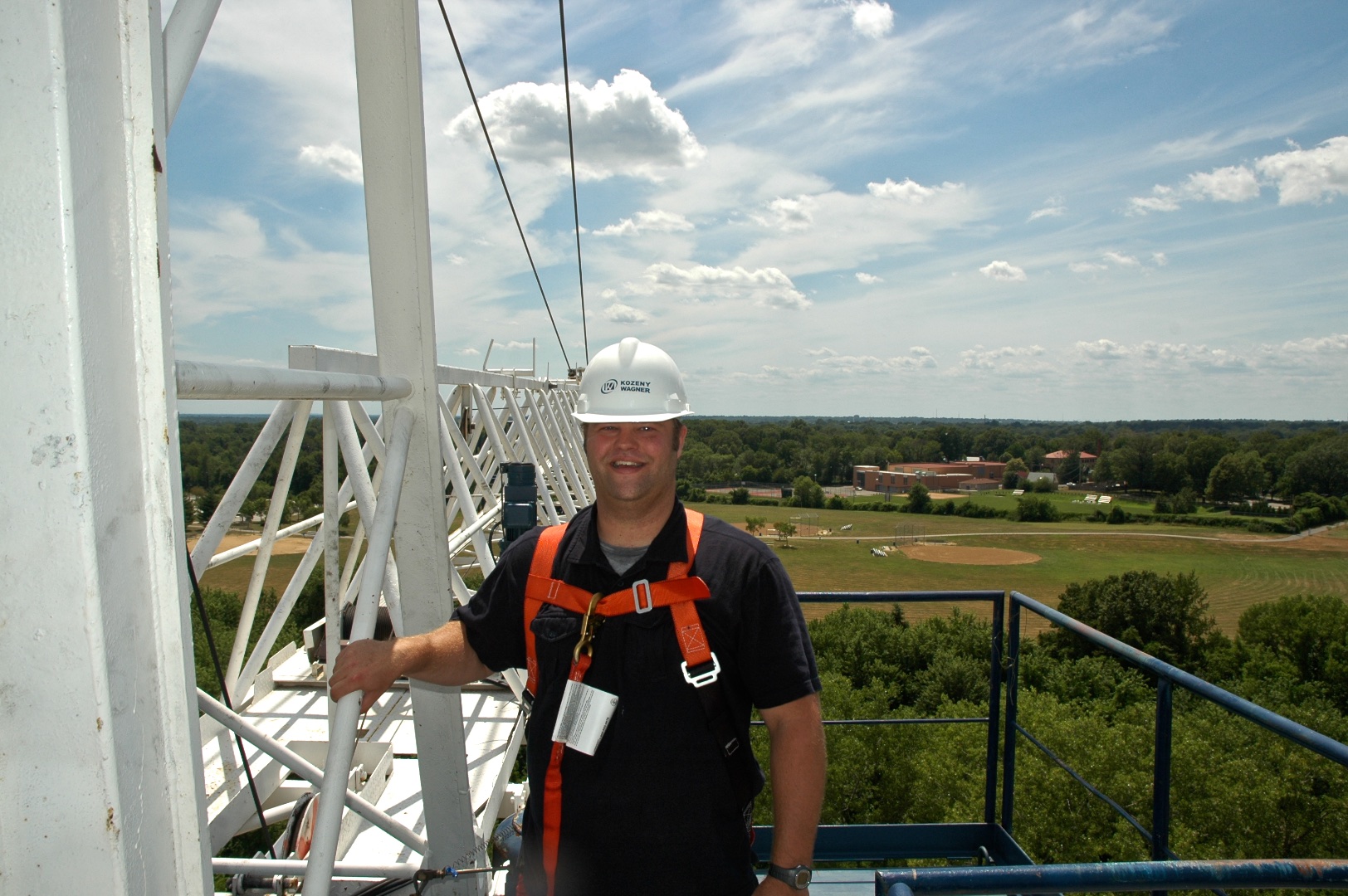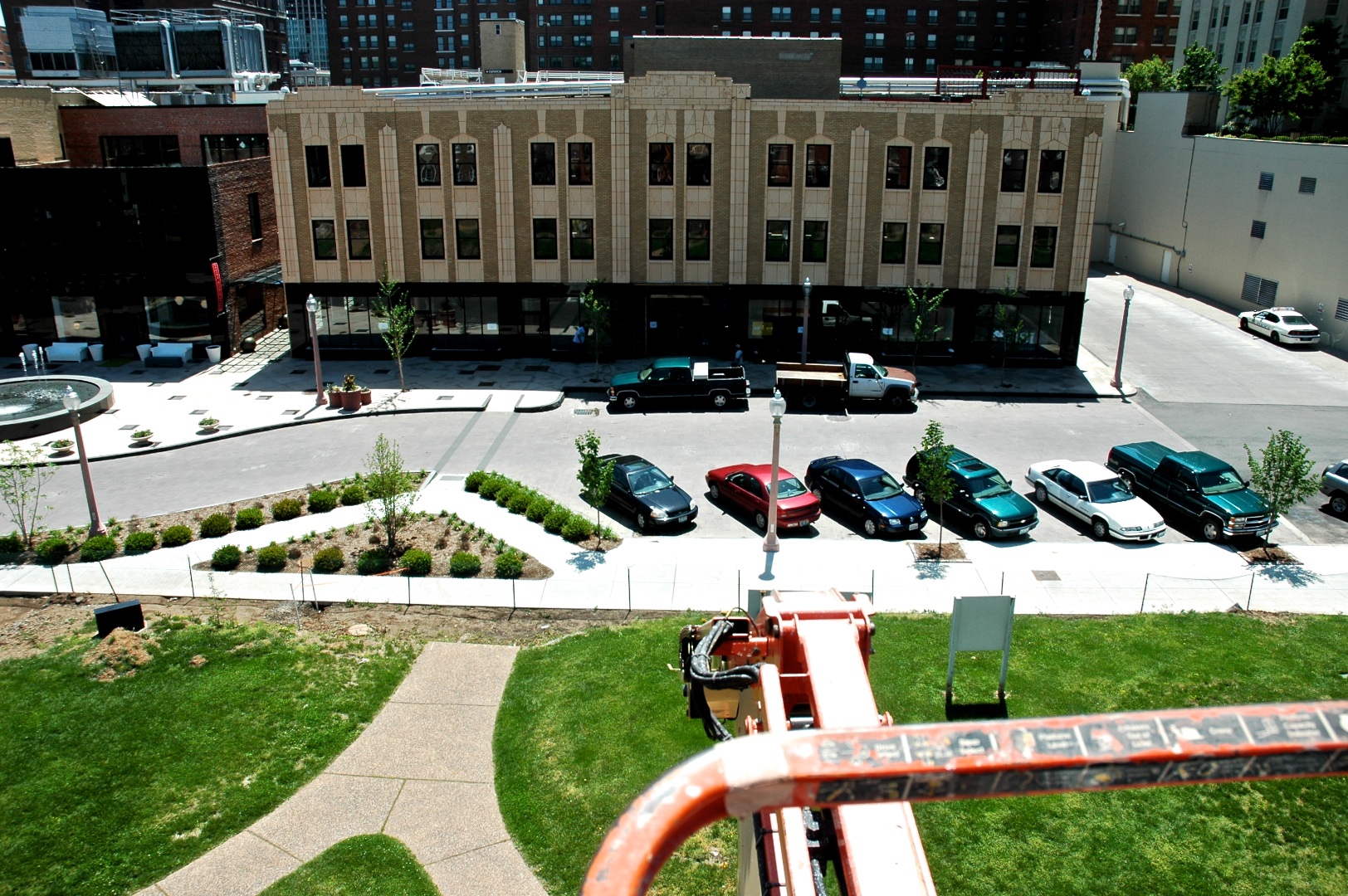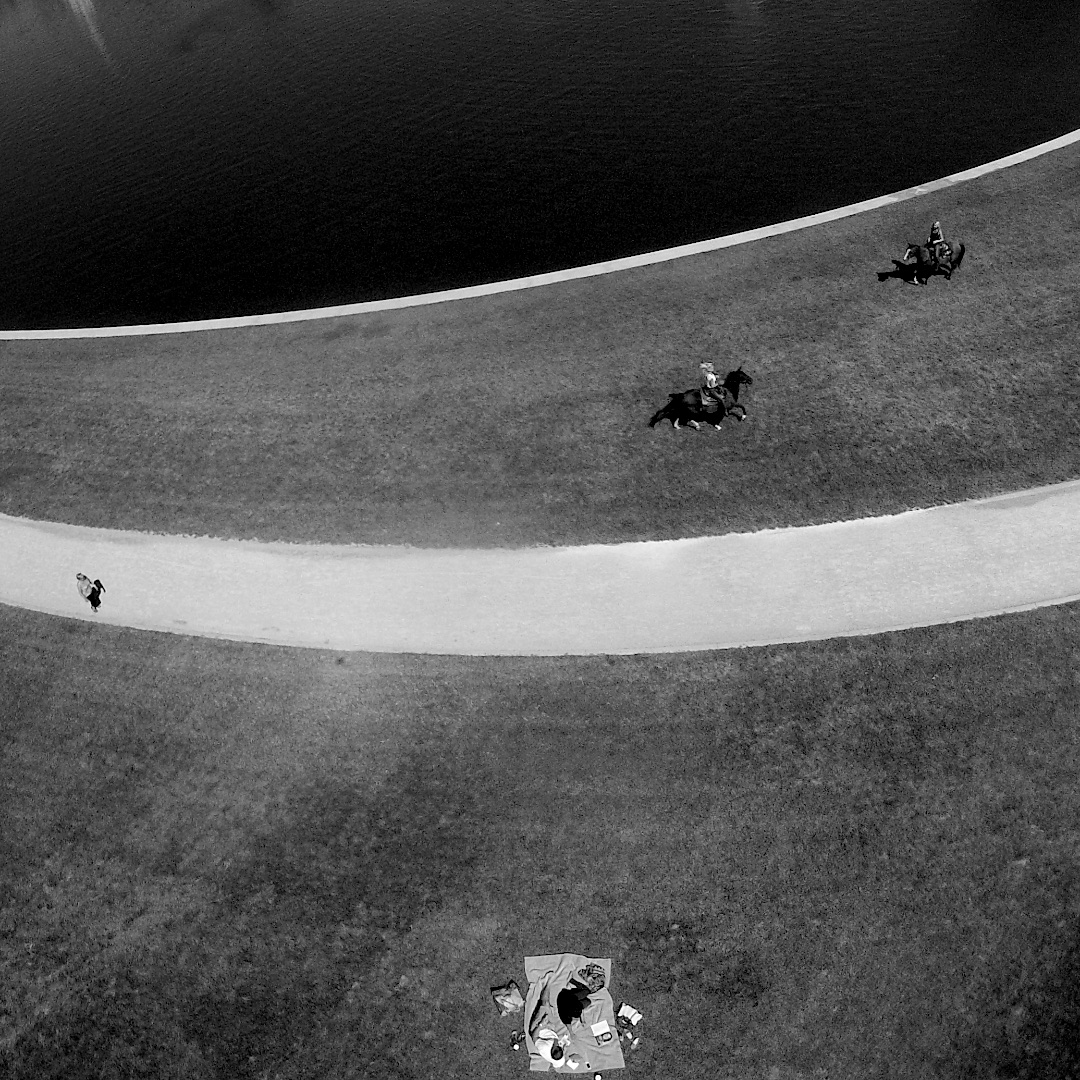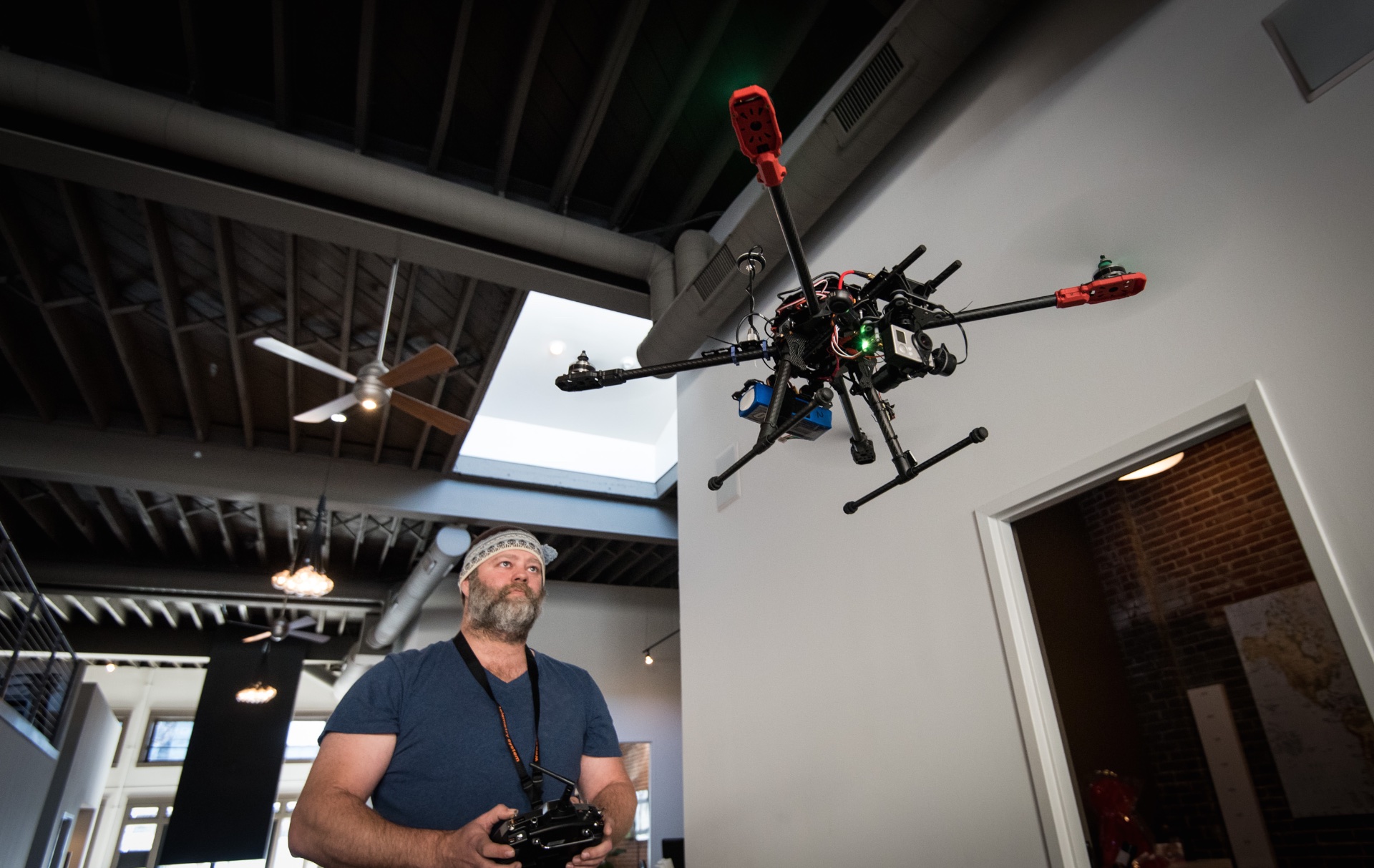Building a Better Tripod for Aerial Photography
If you’ve kept up with our blog, we’re sure you’ve seen some of Atomicdust’s photography work for our clients. With photographers on staff, we have the ability to make every image fit with our creative goals, reinforce messaging and further build emotional connections with our clients’ brands. It also allows us to do (and photograph) cool stuff.

Sometimes, our clients need a little more than what’s typically expected in order to find the perfect angles. Over the years, we’ve had to conquer our fear of heights, whether it was renting a 120-foot boom lift for photos of Maryland Plaza, or scaling a 200-foot construction crane for a project with Kozeny Wagner. These projects and more would have been far easier if we could have flown the camera up to the right height and snapped a few photos safely from the ground. Enter the drone, or small unmanned aircraft system (UAS), as we nerds prefer to call them.

While most of our clients aren’t too concerned with what kind of tripods we’re using to get the right shot, aerial photography does offer one big benefit: cost. The cost just to rent a lift for an all-day shoot is around $2700 – about the same as buying a new DJI Inspire 1, a ready-to-use drone designed for aerial photography. And if you’ve ever thought about hiring a helicopter for filming, the savings are obviously even greater.
Changing the Rules
Lately, we’ve been building, flying and experimenting with remote-controlled helicopters. For the last two years, we’ve been able to fly around without any legal worries, as long as we’rebelow 400 feet and five miles away from any airport (per the rules for model airplane hobbyists). So we’re fine – right until we attempt to charge for footage or photography. That’s illegal. Farmers are facing an equally tricky dilemma. If they want to fly over their corn fields for fun, that’s no problem. But as soon as a farmer uses the images to make decisions about crops, it’s commercial and against the rules.
As you might have heard in the news, the Federal Aviation Administration recently proposed a framework of regulations that allows routine use of certain small drones (under 55 lbs.), and maintains flexibility to accommodate future technological innovations.“Technology is advancing at an unprecedented pace, and this milestone allows federal regulations and the use of our national airspace to evolve to safely accommodate innovation,” said Transportation Secretary Anthony Foxx.

The proposal would create safety rules for small drones conducting commercial operations, limiting flights to daytime and visual-line-of-sight operations. “Operators” would be required to maintain a visual line of sight when flying, pass an aeronautical knowledge test, obtain an FAA UAS operator certificate and pass the FAA knowledge tests every two years.
Flights will be limited to 500 feet in altitude and no faster than 100 mph. While it’s fun to fly recreationally at 100+ mph, there’s not a whole lot of interesting aerial photography going on above 500 feet, and certainly not at that speed. We typically fly below 100 feet and are usually panning very slowly to give the effect of moving an aerial photo dolly.
Luckily, they aren’t calling us “pilots” or requiring actual flight time in a real airplane.
Ready for the Switch
It seems we’re always tinkering and honing our craft at Atomicdust, and aerial photography is no exception. Currently, we’re flying a custom built four-rotor quadcopter that weighs around 5.5 pounds and carries a GoPro Hero 4 Black capable of 4K HD video and 12MP still images. We set it up for dual operators so one remote controls the actual flight while the other pans and tilts the camera gimbal. The camera operator can see what the drone sees, there’s a wireless live feed to help frame shots hundreds of feet away.
Unfortunately, the visual-line-of-sight rule puts a damper on Amazon’s plans for Prime Air, as someone would have to physically follow every drone to each destination, keeping it in sight at all times. We’ll probably have to wait a few more years to get Amazon items or pizza delivered by a GPS-guided UAS. Thankfully, this limitation doesn’t pose a problem for most aerial photography situations.
What’s Next?
If the proposed rules pass as planned, the average consumer won’t notice any difference. You’ll still be able to buy a drone from Amazon, have it delivered by a big brown truck and fly it around. And, of course, film your antics and share them on YouTube.
We’re excited about the possibilities for our clients. As soon as the new rules are in place we plan on getting our operator certificates, building a DSLR-sized airframe and flying cameras for our clients. Until then, if anyone needs any aerial photography we’ll gladly rent a lift or a real helicopter for you.

